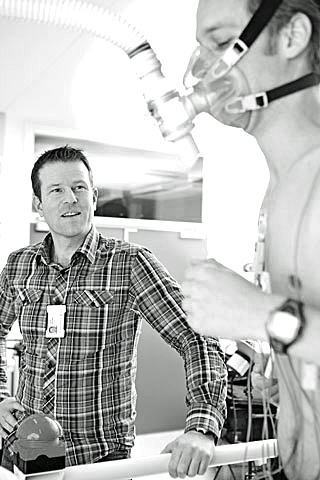WP 4 - OptimEx
WP 4 - Telemedicine-based monitoring of physical activity
WP 4 - Telemedicine-based monitoring of physical activity
Advances in telecommunication technologies have created new opportunities to provide telemedical care as an adjunct to medical management of patients with heart failure. The results in patients with systolic heart failure assessing non-invasive measures, e.g. ECG, blood pressure, body weight, or heart rate variability are promising1, but further research is needed.
 Telemedicine-based monitoring of and feedback on training adherence has not either been tested in HFPEF patients. Also, the effects of different exercise training volumes particularly differing in intensity (MCT versus HIT-LV/HIT-HV) and duration (MCT versus HIT-LV) on regular daily physical activity have not been tested before.
Telemedicine-based monitoring of and feedback on training adherence has not either been tested in HFPEF patients. Also, the effects of different exercise training volumes particularly differing in intensity (MCT versus HIT-LV/HIT-HV) and duration (MCT versus HIT-LV) on regular daily physical activity have not been tested before.
The main reason to include a telemedicine approach in OptimEx-CLIN is:
1. To enable continuous monitoring of home-based ergometer exercise sessions
2. To improve adherence by giving automated feedback information to the patient on the training volumes, and individual feedback/advice once adherence drops <80% of the scheduled exercise training volume
3. To enable continuous monitoring of daily physical activity by accelerometry
To include telemedicine into life-style intervention strategies may be a key factor to increase adherence in these programs. In our study inclusion of these strategies is important for assessing the relationship between different types of active exercise intervention and adherence as well as their impact on daily activity, both key questions raised in OptimEx-CLIN (WP3).
The German company Vitaphone (external link) was chosen as partner in this context because of their long-term experience and expertise in telemedicine. They have also been involved in several scientific consortia of EU and German grant applications.
 1 Inglis SC, et al. Which components of heart failure programmes are effective? A systematic review and meta-analysis of the outcomes of structured telephone support or telemonitoring as the primary component of the chronic heart failure management in 8323 patients: Abridged Cochrane Review. Eur J Heart Failure 2011, 13:1028-1040.
1 Inglis SC, et al. Which components of heart failure programmes are effective? A systematic review and meta-analysis of the outcomes of structured telephone support or telemonitoring as the primary component of the chronic heart failure management in 8323 patients: Abridged Cochrane Review. Eur J Heart Failure 2011, 13:1028-1040.
